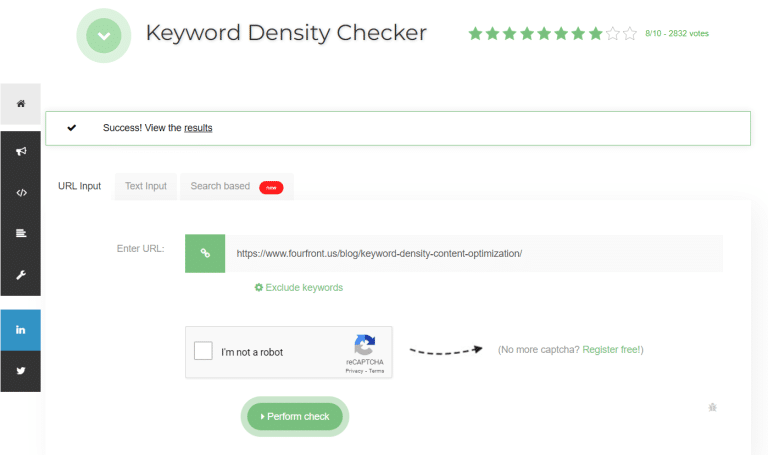Keyword density is an important aspect of search engine optimization (SEO) that refers to how often a target keyword appears in your content. While it’s no longer the primary focus of SEO, using keywords effectively can still help improve your content’s visibility in search results.
Understanding Keyword Density
Keyword density is the percentage of times a keyword appears in your content compared to the total word count.
In the past, a higher keyword density was thought to improve rankings. However, modern SEO focuses more on natural language use and overall content quality.
This means that content that might have been considered “good SEO content” as recently as a couple of years ago might now actually be harming your site if the keyword density is too high, resulting in awkward phrasing that negatively impacts user experience.
We recommend regularly reviewing and updating the content on your site, in part to make sure it aligns with current best practices.
Best Practices for Keyword Usage
Natural Writing Approach
Write for your readers first, not search engines.
Let’s say that again for the people in the back: Write for your readers, not for search engines.
Use keywords in a way that sounds natural and adds value to your content. Forced or excessive keyword use can make your writing sound awkward and may turn readers away. Focus on creating informative, engaging content that naturally incorporates relevant keywords.
Keyword Variations
Instead of repeating the same keyword, use variations and related terms. This helps your content sound more natural and can improve its relevance for a wider range of searches. For example, if your main keyword is “dog training,” you might also use “puppy obedience” or “canine behavior.” This approach, known as semantic SEO, helps search engines understand the broader context of your content.
Balanced Keyword Usage
While there’s no perfect keyword density, aim for a balanced approach. A general guideline is to keep it between 1-2% of your total word count. This means using your main keyword 1-2 times per 100 words. However, this is just a guideline, not a strict rule. The key is to use keywords naturally and in context.
Strategic Keyword Placement
Use your main keyword in important places like the title, first paragraph, headings, and conclusion. This helps both readers and search engines understand what your content is about. However, don’t force keywords where they don’t fit naturally. The readability and flow of your content should always take priority.
User Experience Priority
Always prioritize readability and user experience over keyword placement. If adding a keyword makes a sentence hard to read or understand, it’s better to leave it out.
Example:
Poor keyword usage: “When looking for dog trainers, our dog training services offer the best dog training techniques for your dog.”
Improved version: “Our professional trainers offer effective techniques to help you train your dog, ensuring a well-behaved and happy pet.”
Keyword Density Tools
Several online tools can help you check your keyword density, such as the Yoast SEO plugin for WordPress, SEOBook Keyword Density Analyzer, and SEO Review Tools’ Keyword Density Checker. Use these tools as guides rather than strict rules to follow. They can provide insights, but your judgment about what reads well and provides value to your audience should be the final judge.

Content Quality and Relevance
While keyword usage is important, the overall quality and relevance of your content matter most. Focus on creating valuable, informative content that answers your audience’s questions and meets their needs. This approach naturally incorporates relevant keywords and is more likely to perform well in search results. Search engines are increasingly able to understand the context and intent behind content, so comprehensive, well-written pieces often outperform those that focus solely on keyword density.
By following these best practices, you can optimize your content for search engines while ensuring it remains engaging and valuable for your readers. Remember, effective SEO is about balance – use keywords wisely, but always prioritize creating high-quality, user-focused content that serves your audience’s needs.









